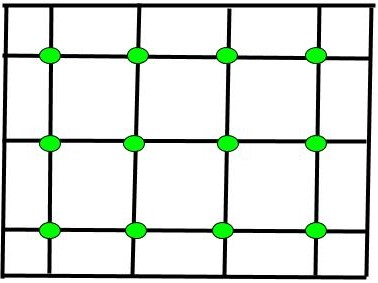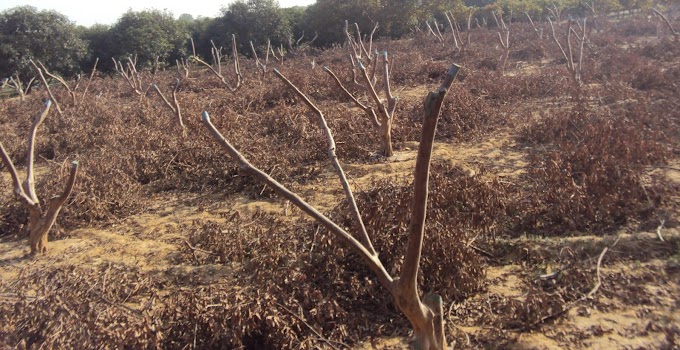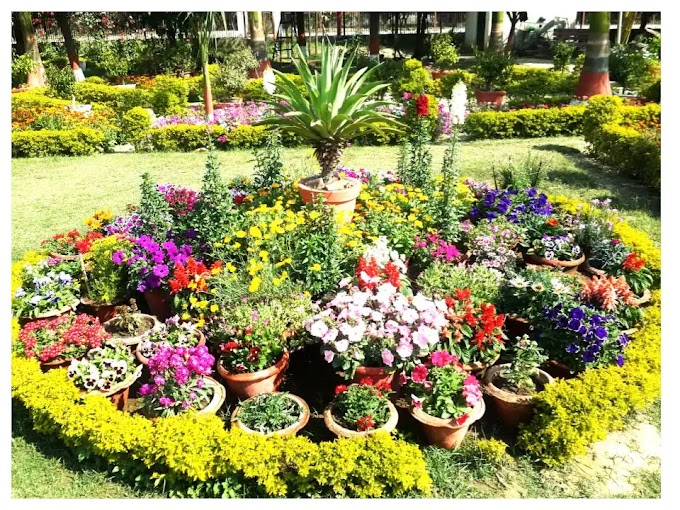The main reasons of low productivity of apple are non availability of quality planting materials and existence of old, senile seedling orchards. Total 5.5 million plants of elite cultivars on clonal or standard seedling root stocks are required for replacement of old unproductive orchards in the India alone but only 40 to 50% of this requirement is meeting from public and private nurseries. The productivity may be increased by using quality planting materials along with using Good Horticultural Practices (GHP) in the management of apple orchards. Content(toc)
Root stocks
The root stock anchors plant in soil, absorbs water and mineral nutrients from the soil and synthesis the plant hormones. The apple root stocks may be grouped into following two groups:
Seedling root stocks
The clonal root stocks of the apple have been introduced into India during early 1960s, however most of the commercial orchards of apple are still raised on seedling root stocks of crab apple ( Malus baccata) and Maharaji. The seeds are stratified below 70C in moist sand during December there after sown in raised bed during February-March in rows at 10x5cm spacing at 2-3 cm depth. Beds are covered with straw or dry leaves
after sowing and irrigated. The cover protects seeds from frost and heavy rains. The one-year-old seedlings become ready for grafting in March-April. Under open condition sub-zero winter temperature and high wing velocity from November to April kills most of the seedling stocks in nursery. To avoid the problem stratified seeds are sown in beds under polyhouse and grafting is done next year during March-April. The use of seedling root stocks should be discouraged due to its genetic variability, vigorous nature, susceptibility to pests and diseases and inability to maintain uniformity in scion growth.
Clonal root stocks
The clonal root stocks of apple have been developed at various apple research stations of the world to meet the specific requirement like cold hardiness, salts tolerance, dwarf plant, resistance to certain pests and diseases, uniformity in scion growth, precocity and quality of fruits. The clonal root stocks of apple are multiplied through stooling. In stooling layers are separated from the mother plant after rooting and transplanted in nursery bed during December. About 1cm thick root stocks are used for grafting of scion in February- March. The developed clonal root stocks are further classified into following categories depending on their various characteristics:
Malling series
It is also called M series. The clonal root stocks of the series have been developed at East Malling Research Station of England in 1913. The name of M series rot stocks starts with prefix word ‘M’ which indicates that clonal root stock is develop at East Malling Research Station. The M series root stocks are further classified as under on the basis of vigor:
Very-dwarfing
M-27which was developed by Herry Mark Tydeman in 1929 from a cross between M-9 and M-13. It can be planted at 0.5X1.5 m spacing.
Dwarfing
M-8, M-9, M-26. M-9 is a chance seedling and susceptible to cold injury. M-26 is developed hybridization of M-16 and M-9.
Semi dwarfing
M-2, M-4 and M-7 (tolerant to excess moisture)
Semi Vigorous
M-13 (tolerant to excess moisture)
Vigorous
M-12 and M-16
Malling-Merton series
It is also called MM series and root stocks of the series carrying prefix MM. These clonal root stocks are resistant to woolly aphid and developed by crossing Malling series rootstocks with Northern Spy cultivar of apple. On the basis of vigor, they have been grouped as under:
Semi-dwarf
MM-106. It is most widely used rootstock developed from a cross between M-2 and Northern Spy.
Semi-vigorous
MM-104 and MM-111. MM-104 is also cross between M-2 and Northern Spy and tolerant to excess moisture while MM-111 is cross between Northern Spy and Merton-793 and drought resistant.
Vigorous
MM-109
Merton series
Merton-778, Merton-779, Merton-789 and Merton-793. Out of these root stocks Merton- 793 is very useful because it is resistant to woolly aphid and collar root, having wide range of adoptability and induces early fruiting.
Polish or P series
The P-series rootstocks of apple have been developed in Poland by making cross between common Antonovka and M-9. The five P-1, P-2, P-16, P-18 and P-22 winter hardy and crown rot resistant root stocks are developed in which P-18 is semi-dwarfing and rest are dwarfing while P-2 and P-22 are dwarfing inter stocks. All these rootstocks are susceptible to fire blight disease of apple.
Ottawa series
Ottawa series of apple rootstocks developed in Canada in which Ottawa hybrid seedlings carrying OH prefix name and Ottawa clonal series carrying O prefix name. In OH-series OH-1 to OH-6 are resistant to latent viruses and in O-series O-1 and O-14 are found promising. The root stocks of these series are still under test.
Budagovsky series
The Michurin collage of Horticulture, Russia introduced the Budagovsky or Bud series root stocks. In the series Bud-9 is dwarfing and resistant to crown rot, Bud-490 is semi-dwarfing, very cold hardy and resistant to crown rot whereas Bud-491 is dwarfing and very cold hardy.
Michigan apple clone series
This series is also called MAC series. The MAC-1 is free from suckering, MAC-9 or Mark similar to M-9 in vigor and productivity and MAC- 24 is semi-vigorous and well anchored in soil.
Other important rootstocks
a) Bemali: It is highly productive, resistant to woolly aphids, similar to M-26 in vigor and developed in Sweden.
b) Jork-9: J-9 developed in Germany from an open pollinated M-9 seedling. J-9 is easy to propagate.
c) Alnarp-2: Introduced from Sweden it is winter hardy, vigorous and induces early bearing.
d) Robusta-5: It is vigorous, winter hardy fire blight resistant and introduced from Canada.
e) Sub clones of M-9: The new sub clones of M-9 such as Pajam-1 and pajam-2 in France, KI-29 in Belgium, Fleuron-56 and NAKB series in Holland and Burgmer series in Germany have also been developed recently which are quite easy in multiplication.
Scion
The 1-year-old healthy shoots having 3-5 vegetative buds should be used as scion. The mother plants from which scions are collected should be of known pedigree, disease free, good bearing ability and of desired cultivars. The scions are collected from dormant plants in December and wrapped with moist moss grass. The scions are stored at 00C-50C and used in February- March for grafting.
Methods of Propagation
Grafting
The tongue grafting is best method for apple propagation. The grafting should be done at 15-20 cm above ground level on the root stock during February –March. It is must to ensure the matching of cambium of scion and root stock before wrapping the graft union with polythene strip to get good success. The polythene strip should be removed from graft 6 weeks after grafting. The undesirable sprouts arising from rootstock below graft union should be removed to ensure better flow of metabolites to scion and get better success in grafting.
Budding
The ‘T’ and ‘Chip’ budding may be performed during July-August for apple propagated. The budding should be discouraged in apple propagation because of slow growth of budded plants in comparison to grafted one.








